
| Saunders' Casemoth (one synonym : Oiketicus saundersii Westwood, 1854) OIKETICINAE, PSYCHIDAE, TINEOIDEA | (donherbisonevans@yahoo.com) and Stella Crossley |
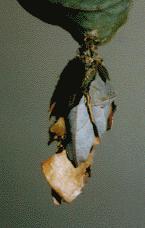
case of early instar
(Photo: Don Herbison-Evans, Sydney, New South Wales)

| Saunders' Casemoth (one synonym : Oiketicus saundersii Westwood, 1854) OIKETICINAE, PSYCHIDAE, TINEOIDEA | (donherbisonevans@yahoo.com) and Stella Crossley |

case of early instar
(Photo: Don Herbison-Evans, Sydney, New South Wales)
These Caterpillars live and pupate in a silken shelter, which they initially cover with bits of leaf. As they grow larger, they attach parallel short twigs sparsely over the surface.

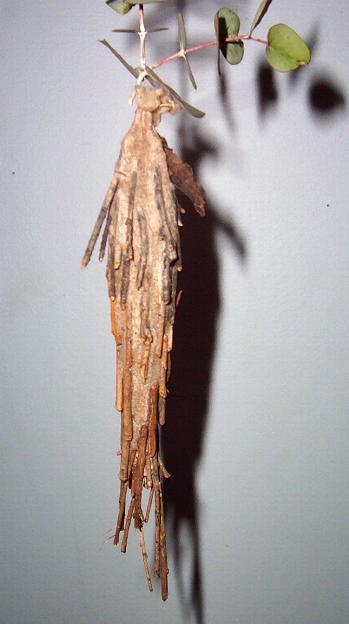 (Photo: courtesy of Rebekah, Bathurst, New South Wales) |
They have been found feeding on a wide variety of plants, including :
They are very adept at repairing their case with silk if it is damaged, and when threatened, seal the front opening until the danger is past, when they cut it open again. The caterpillar is also adept at climbing, even on glass surfaces. It does so by attaching a series of bars of silk to the surface it wishes to climb, and using them like rungs on a ladder.
|
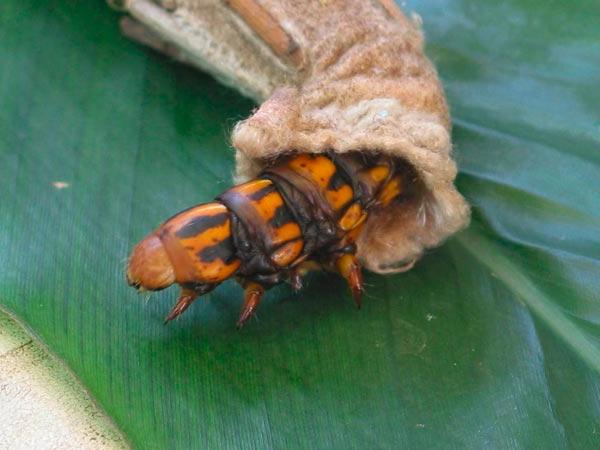
Only the head and thorax have a chitinous armour. This is brightly coloured in black and orange. The animal keeps its unprotected off-white abdomen inside the case at all times.

The case can grow to a length of 12 cms or more. The caterpillar pupates within its silken case, which it usually hangs up on a wall, fence, or tree. The pupation period can be a few weeks to a few months, depending on the season and the weather.
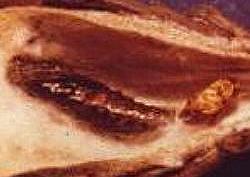
The female adult has no wings and cannot fly, so she remains in her case after emergence from the pupa. She is white with a brown head, and has a length of about 3 cms. When fertilised, through the anal end of the case, she lays several thousand eggs inside the case. In due course, the early instar caterpillars emerge from the case and go walk-about in the big wide world.
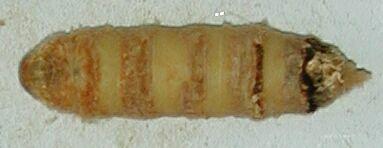
 (Photo: courtesy of John Brickhill, Dickson, Australian Capital Territory) |
The male, together with half of the pupal skin, emerges from the anal end of the case. He has wings and flies off. He is strikingly marked, with black wings, an orange hairy head, and a black and orange banded abdomen. The wings are short, and the abdomen is long and prehensile, presumably to facilitate reaching into the silken case of a female for copulation. He has a wingspan of about 3 cms, and a similar body length.
|
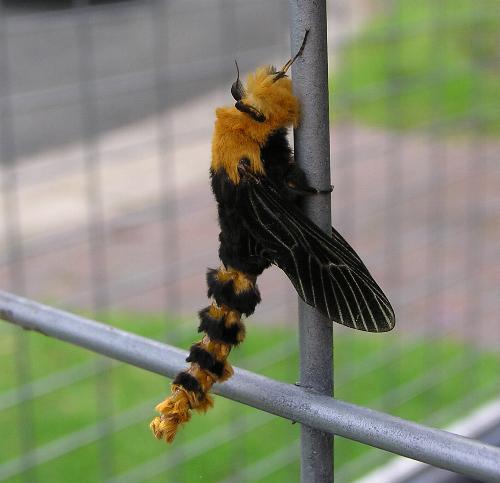
The species occurs in the eastern half of Australia, including
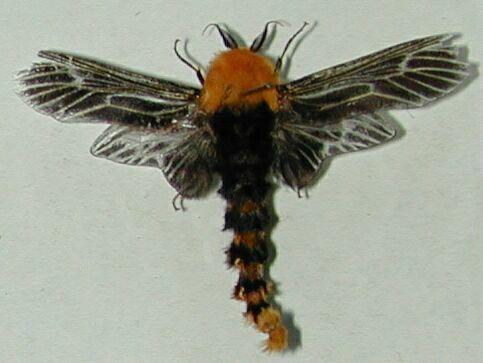
The life history was illustrated by Arthur Bartholomew in 1867.
Further reading :
Densey Clyne,
Artisans of Gum Trees,
Butterflies and Other Invertebrates Club,
Metamorphosis Australia,
Issue 80 (March 2016), pp. 11-14.
Ian F.B. Common,
Moths of Australia,
Melbourne University Press, 1990, fig. 19.2, pp. 179,180.
Pat and Mike Coupar,
Flying Colours,
New South Wales University Press, Sydney 1992, p. 82.
William Wilson Saunders,
Remarks on the Habits and Economy of a Species of Oiketicus
found on Shrubs in the Vicinity of Sydney, N. S. W.,
Transactions of the Entomological Society of London,
Volume 5 (1847), p. 43.
 caterpillar |  butterflies |  Lepidoptera |  moths |  caterpillar |
(updated 17 September 2011, 27 July 2024)